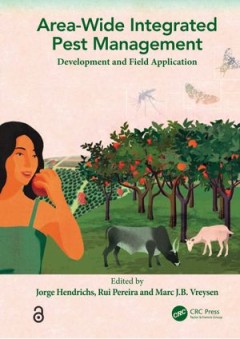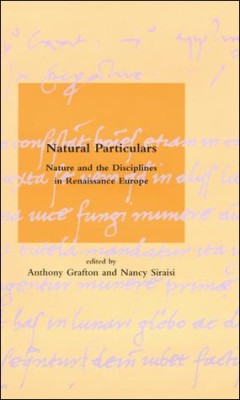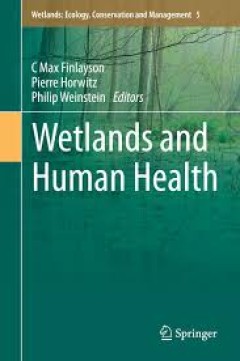Filter by

Area-wide Integrated Pest Management : Development and Field Application
Over 98% of sprayed insecticides and 95% of herbicides reach a destination other than their target species, including non-target species, air, water and soil. The extensive reliance on insecticide use reduces biodiversity, contributes to pollinator decline, destroys habitat, and threatens endangered species. This book offers a more effective application of the Integrated Pest Management (IPM) a…
- Edition
- -
- ISBN/ISSN
- 9781003169239
- Collation
- -
- Series Title
- -
- Call Number
- -

Bienen an der Hochschule
In diesem Open-Access-Buch werden verschiedene Erfahrungen vorgestellt, die im Bienenprojekt „BEEsy Mission“ der Hochschule Pforzheim gesammelt wurden. Zukünftigen Projektverantwortlichen wird eine Hilfestellung bei der institutionellen Etablierung und Haltung von Bienen gegeben.Das Buch befasst sich unter anderem mit den Fragestellungen und Herausforderungen, die im Projektkonzept berück…
- Edition
- 1
- ISBN/ISSN
- -
- Collation
- -
- Series Title
- essentials
- Call Number
- XIII, 38

Invasive Species in Forests and Rangelands of the United States: A Comprehens…
This open access book describes the serious threat of invasive species to native ecosystems. Invasive species have caused and will continue to cause enormous ecological and economic damage with ever increasing world trade. This multi-disciplinary book, written by over 100 national experts, presents the latest research on a wide range of natural science and social science fields that explore the…
- Edition
- -
- ISBN/ISSN
- 978-3-030-45367-1
- Collation
- -
- Series Title
- -
- Call Number
- -

Decision Science for Future Earth: Theory and Practice
This open access book provides a theoretical framework and case studies on decision science for regional sustainability by integrating the natural and social sciences. The cases discussed include solution-oriented transdisciplinary studies on the environment, disasters, health, governance and human cooperation. Based on these case studies and comprehensive reviews of relevant works, including l…
- Edition
- Ed. I
- ISBN/ISSN
- 978-981-15-8632-3
- Collation
- -
- Series Title
- -
- Call Number
- -

Enhancing Smallholder Farmers' Access to Seed of Improved Legume Varieties Th…
This open access book shares the experiences of Tropical Legumes III (TLIII) project in facilitating access to seed of improved legume varieties to smallholder farmers through innovation platforms. It highlights practices and guiding principles implemented in eight developing countries of sub-Saharan Africa and South Asia. This book details key processes that respective teams employed to create…
- Edition
- -
- ISBN/ISSN
- 978-981-15-8014-7
- Collation
- -
- Series Title
- -
- Call Number
- -

Rice Improvement: Physiological, Molecular Breeding and Genetic Perspectives
This book is open access under a CC BY 4.0 license. By 2050, human population is expected to reach 9.7 billion. The demand for increased food production needs to be met from ever reducing resources of land, water and other environmental constraints. Rice remains the staple food source for a majority of the global populations, but especially in Asia where ninety percent of rice is grown and con…
- Edition
- -
- ISBN/ISSN
- 978-3-030-66530-2
- Collation
- -
- Series Title
- -
- Call Number
- -

Microorganisms in the Deterioration and Preservation of Cultural Heritage
This open access book offers a comprehensive overview of the role and potential of microorganisms in the degradation and preservation of cultural materials (e.g. stone, metals, graphic documents, textiles, paintings, glass, etc.). Microorganisms are a major cause of deterioration in cultural artefacts, both in the case of outdoor monuments and archaeological finds. This book covers the mic…
- Edition
- -
- ISBN/ISSN
- 978-3-030-69411-1
- Collation
- -
- Series Title
- -
- Call Number
- -

Introduction to Epigenetics
This open access textbook leads the reader from basic concepts of chromatin structure and function and RNA mechanisms to the understanding of epigenetics, imprinting, regeneration and reprogramming. The textbook treats epigenetic phenomena in animals, as well as plants. Written by four internationally known experts and senior lecturers in this field, it provides a valuable tool for Master- and …
- Edition
- -
- ISBN/ISSN
- 978-3-030-68670-3
- Collation
- -
- Series Title
- -
- Call Number
- -

Natural particulars :nature and the disciplines in Renaissance Europe
This volume examines the transformation in ways of studying naturethat took place in Western Europe during the fifteenth and sixteenthcenturies. This volume examines the transformation in ways of studying nature that took place in Western Europe during the fifteenth and sixteenth centuries. Some of the essays trace particular textual traditions, while others follow the development of scholarly…
- Edition
- -
- ISBN/ISSN
- 9780262274210
- Collation
- 1 online resource (xi, 426 pages) :illustrations.
- Series Title
- -
- Call Number
- -

Wetlands and Human Health
The book addresses the interactions between wetlands and human health and well-being. A key feature is the linking of ecology-health and the targeting of practitioners and researchers. The environmental health problems of the 21st Century cannot be addressed by the traditional tools of ecologists or epidemiologists working in their respective disciplinary silos; this is clear from the emergence…
- Edition
- -
- ISBN/ISSN
- 978-94-017-9609-5
- Collation
- -
- Series Title
- -
- Call Number
- -
 Computer Science, Information & General Works
Computer Science, Information & General Works  Philosophy & Psychology
Philosophy & Psychology  Religion
Religion  Social Sciences
Social Sciences  Language
Language  Pure Science
Pure Science  Applied Sciences
Applied Sciences  Art & Recreation
Art & Recreation  Literature
Literature  History & Geography
History & Geography